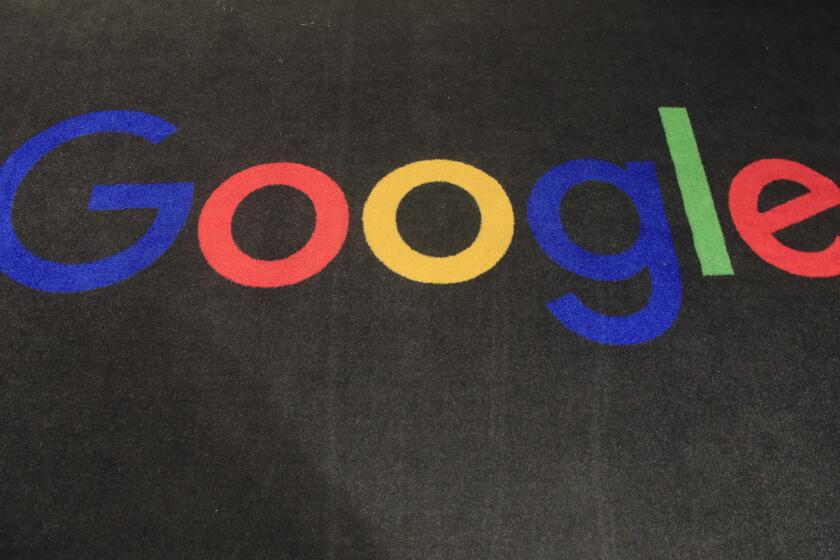‘Balloon’ Loans Take off Again : Short-Term Home Mortgages Also Gain Popularity
- Share via
A growing number of home buyers are using “balloon” mortgages, a financing tool that made millions for investors in the double-digit inflation days of the 1970s, and lost millions for others when prices flattened in the early ‘80s.
The popularity of 10- and 20-year loans are also on the rise, some mortgage brokers say.
All three of these loans have become easier to find, thanks to the Federal National Mortgage Assn.’s decision earlier in the year to buy such loans from lenders.
“Borrowers have more loan options today than they ever had before,” said George Alexander, a Fannie Mae vice president.
Unlike most conventional loans, a balloon mortgage isn’t completely amortized by the time the loan comes due. Instead, the borrower makes relatively small monthly payments over the life of the loan, and then must pay the balance off in one big “balloon” payment when the loan term is over.
The most common balloon mortgages currently being marketed have seven- or 10-year terms, and they offer borrowers some unusual advantages. Although the loans come due fairly soon, monthly payments are typically calculated using a 30-year schedule. That translates into low monthly expenses, fairly easy qualifying standards and big write-offs for finance charges.
As an added bonus, rates on most balloon loans are usually one-quarter to one-half point lower than rates on 30-year mortgages because the lender’s risk is lessened by the early payoff date.
The biggest drawback to a balloon loan is obvious: Since the entire balance of the loan must be repaid in seven or 10 years, the borrower will likely have to sell or refinance in order to meet the obligation.
That’s not a problem for the “average American” who, statistics show, moves once every six years--but it could be a problem if the homeowner is forced to sell when the real estate market is soft or refinancing rates are high.
Thousands of borrowers found out about that drawback in the early 1980s, when their balloon loans came due just as mortgage rates peaked and the nation’s housing market bottomed out. These unfortunate borrowers had the difficult choice of refinancing at the higher interest rates or of selling their home in a poor market.
Can Be Risky
Lenders realize that balloon mortgages can be risky, so many of them require that the borrower make a minimum 20% down payment. That’s enough to knock many cash-strapped buyers--especially first-timers--out of the balloon-mortgage market.
Still, balloon loans appeal to several different types of buyers. Many of the people taking the loans out today are purchasing fairly small homes now, but plan to move into a bigger house later. Balloons also appeal to some corporate and military personnel because they can accurately predict when they’ll transfer to another town, even if their moving date is several years away.
The handful of first-time buyers who can swing a 20% or 25% down payment often like balloon mortgages because their monthly payments will be low, and they expect to move long before the loan on their starter home comes due.
Lower Interest Rates
The new 10- and 20-year loans are also welcome additions to a mortgage market previously dominated by loans that take 15 or 30 years to repay.
Ten-year, fixed-rate mortgages currently carry a 10.8% rate, compared with an 11% rate for 20-year loans and 11 3/8% for 30-year mortgages, said Ira Cohen, senior vice president at Woodland Hills-based ARCS Mortgage Inc. Rates on 15-year mortgages, previously the only alternative to 30-year loans that was widely available, stand at 11.1%.
“Quick-pay” mortgages that are amortized in fewer than 30 years are attractive for several reasons. Overall interest payments are drastically reduced because the repayment period is shorter and their rates are typically lower than rates of 30-year mortgages.
Perhaps even better, the borrower owns the home free and clear much sooner.
“The short-term mortgages are great if you want to pay your home off before you retire or before your children enroll in college,” Cohen said.
Higher Income Needed
It always has been more difficult to qualify for a 15-year loan than a 30-year mortgage because the higher monthly payment required to pay the loan off in 15 years means the borrower must have a higher monthly salary, Cohen said.
“One of the nice things about the new 20-year mortgages is that they’re easier to get than the 15-year loans, but they still allow the borrower to pay the home off in a fraction of the time it takes to pay off a 30-year loan,” he added.
The 10-year mortgages appeal to those who can make slightly higher payments and want to pay their home off even sooner, Cohen said.
Interest savings on quick-pay loans are dramatic. Based on current rates, a borrower who took out a $100,000 mortgage for 10 years would pay $63,944 in finance charges over the life of the loan, according to Cohen.
Less Interest Cost
A 15-year mortgage for the same amount would mean $105,719 in interest payments, and a 20-year loan, $151,821. The 30-year loan would require a staggering $253,075 in interest charges.
Monthly payments for interest and principal would range from $981 for the 30-year loan to $1,366 for the 10-year mortgage, Cohen said.
Although lower finance charges would result in fewer tax deductions over the life of the loan, experts note that write-offs aren’t as important as they used to be because today’s lower tax rates make deductions worth less.
More to Read
Inside the business of entertainment
The Wide Shot brings you news, analysis and insights on everything from streaming wars to production — and what it all means for the future.
You may occasionally receive promotional content from the Los Angeles Times.










